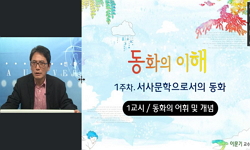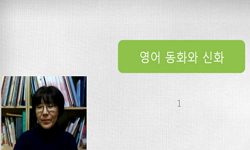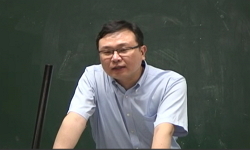방정환의 「체부와 굴뚝새」와 하마다 히로스케의 「굴뚝새」의 텍스트 분석을 통해 크게 낱말상의 변이와 내용상의 변이로 나누어 살펴보았다. 낱말상의 변이를 통해서는 이야기의 정황...
http://chineseinput.net/에서 pinyin(병음)방식으로 중국어를 변환할 수 있습니다.
변환된 중국어를 복사하여 사용하시면 됩니다.
- 中文 을 입력하시려면 zhongwen을 입력하시고 space를누르시면됩니다.
- 北京 을 입력하시려면 beijing을 입력하시고 space를 누르시면 됩니다.

방정환의 번역동화 「체부와 굴뚝새」로 본 번역 특징 연구 = A study on the translational features of the <CHEBU WA KULTTUKSE>, a translated fairy tale by Bang, Jeong–hwan
한글로보기https://www.riss.kr/link?id=A109498666
-
저자
김영순 ((사)한국대학교육협의회)
- 발행기관
- 학술지명
- 권호사항
-
발행연도
2024
-
작성언어
Korean
-
주제어
Bang Jeong–hwan ; Hamada hirosuke ; translation ; fairy tale ; <CHEBU WA KULTTUKSE> ; <KULTTUKSE> ; featur ; variation ; eorini ; reader ; Others ; 방정환 ; 하마다 히로스케 ; 번역 ; 동화 ; 「체부와 굴뚝새」 ; 「굴뚝새」 ; 특이점 ; 변이 ; 어린이 ; 독자 ; 타자
-
등재정보
KCI등재
-
자료형태
학술저널
-
수록면
321-349(29쪽)
- 제공처
-
0
상세조회 -
0
다운로드
부가정보
국문 초록 (Abstract)
하마다 히로스케의 「굴뚝새」에서는 굴뚝새, 우체부, 들 속 작은 집 식구들 간의 교류와 소통이 시적이며 함축적인 문장으로 잔잔하게 그려지며 문학적인 감수성은 고취되었으나, 단 하나의 단일 요소, 북쪽 나라, 한창 추운 겨울, 황량한 겨울 들판, 어두운 집안, 노인, 눈보라 휘몰아치는 들판 등이 강조되며 고립, 쓸쓸함, 어둠의 정서가 부각되었다. 이에 반해 방정환의 「체부와 굴뚝새」는 어느 정도 원작이 지닌 문학적인 감수성은 유지하되, 어린이 구성원을 늘려 생기, 활기로 변환시켰다. 결말 부분에서도 변이가 보인다. 원작에서 강조된 신에 대한 부분을 삭제하고 공동체 속에 실재하는 선한 이웃인 우체부를 부각시켜 굴뚝새와 우체부의 정서적인 교감을 강조하였다.
이처럼 방정환이 번역한 「체부와 굴뚝새」는 전체적으로 실감 나는 묘사, 어린이가 상징하는 생기, 활기, 진솔한 감정, 정서적인 교감 등 두드러졌으며, 특히 지금 눈앞에 현재하는 타자로서의 ‘어린이’ 독자를 향한 배려와 의식이 반영되어 있음을 알 수 있었다.
방정환의 「체부와 굴뚝새」와 하마다 히로스케의 「굴뚝새」의 텍스트 분석을 통해 크게 낱말상의 변이와 내용상의 변이로 나누어 살펴보았다. 낱말상의 변이를 통해서는 이야기의 정황이 더 실감나게 전달되고 생생하게 묘사되었음을 알 수 있었다. 한편 내용면에서는 크게 두 군데에서 변이가 일어났다.
하마다 히로스케의 「굴뚝새」에서는 굴뚝새, 우체부, 들 속 작은 집 식구들 간의 교류와 소통이 시적이며 함축적인 문장으로 잔잔하게 그려지며 문학적인 감수성은 고취되었으나, 단 하나의 단일 요소, 북쪽 나라, 한창 추운 겨울, 황량한 겨울 들판, 어두운 집안, 노인, 눈보라 휘몰아치는 들판 등이 강조되며 고립, 쓸쓸함, 어둠의 정서가 부각되었다. 이에 반해 방정환의 「체부와 굴뚝새」는 어느 정도 원작이 지닌 문학적인 감수성은 유지하되, 어린이 구성원을 늘려 생기, 활기로 변환시켰다. 결말 부분에서도 변이가 보인다. 원작에서 강조된 신에 대한 부분을 삭제하고 공동체 속에 실재하는 선한 이웃인 우체부를 부각시켜 굴뚝새와 우체부의 정서적인 교감을 강조하였다.
이처럼 방정환이 번역한 「체부와 굴뚝새」는 전체적으로 실감 나는 묘사, 어린이가 상징하는 생기, 활기, 진솔한 감정, 정서적인 교감 등 두드러졌으며, 특히 지금 눈앞에 현재하는 타자로서의 ‘어린이’ 독자를 향한 배려와 의식이 반영되어 있음을 알 수 있었다.
다국어 초록 (Multilingual Abstract)
In <KULTTUKSE> by Hirosuke Hamada, exchanges and communication between chimney birds, postmen, and small family members in the field are calmly depicted in poetic and suggestive sentences, and literary sensitivity was promoted, but a single element, the northern country, the middle winter, the desolate winter fields, the dark house, the elderly, and the snowstorming fields were emphasized, highlighting the feelings of isolation, loneliness, and darkness. On the other hand, Bang Jung–hwan’s <CHEBU WA KULTTUKSE> maintains the literary sensitivity of the original work to some extent, but increases the number of children to convert it into vitality and vitality. There is also a variation in the ending part. The part about God emphasized in the original work was deleted, and the good neighbor, the postman, who exists in the community, was highlighted to emphasize the emotional communication between the chimney bird and the postman.
In this way, Bang Jung–hwan’s translation of <CHEBU WA KULTTUKSE> stood out, including realistic descriptions, vitality, sincere emotions, and emotional communication, especially reflecting the consideration and consciousness of the “Children” reader as the current other.
Through the text analysis of Bang Jung–hwan’s <CHEBU WA KULTTUKSE> and Hamada Hirosuke’s <KULTTUKSE>. it is largely divided into word variations and content variations. Through word variation, it was found that the context of the sto...
Through the text analysis of Bang Jung–hwan’s <CHEBU WA KULTTUKSE> and Hamada Hirosuke’s <KULTTUKSE>. it is largely divided into word variations and content variations. Through word variation, it was found that the context of the story was conveyed more realistically and vividly described. On the other hand, in terms of content, mutations occurred in two major places.
In <KULTTUKSE> by Hirosuke Hamada, exchanges and communication between chimney birds, postmen, and small family members in the field are calmly depicted in poetic and suggestive sentences, and literary sensitivity was promoted, but a single element, the northern country, the middle winter, the desolate winter fields, the dark house, the elderly, and the snowstorming fields were emphasized, highlighting the feelings of isolation, loneliness, and darkness. On the other hand, Bang Jung–hwan’s <CHEBU WA KULTTUKSE> maintains the literary sensitivity of the original work to some extent, but increases the number of children to convert it into vitality and vitality. There is also a variation in the ending part. The part about God emphasized in the original work was deleted, and the good neighbor, the postman, who exists in the community, was highlighted to emphasize the emotional communication between the chimney bird and the postman.
In this way, Bang Jung–hwan’s translation of <CHEBU WA KULTTUKSE> stood out, including realistic descriptions, vitality, sincere emotions, and emotional communication, especially reflecting the consideration and consciousness of the “Children” reader as the current other.
동일학술지(권/호) 다른 논문
-
1980년대 이티(E.T.)의 문화사 -영화
의 수용과 다매체 문화콘텐츠로의 전유를 중심으로- - 한국아동청소년문학학회
- 고지혜
- 2024
- KCI등재
-
한국 근대 아동극에 나타난 동물 연구 -『어린이』, 『신소년』, 『별나라』를 중심으로-
- 한국아동청소년문학학회
- 손증상
- 2024
- KCI등재
-
그림동화의 기호 표현과 의미 작용의 효과 -앤서니 브라운의 「고릴라」를 중심으로-
- 한국아동청소년문학학회
- 한명숙
- 2024
- KCI등재
-
- 한국아동청소년문학학회
- 권혁래
- 2024
- KCI등재




 KCI
KCI DBpia
DBpia






